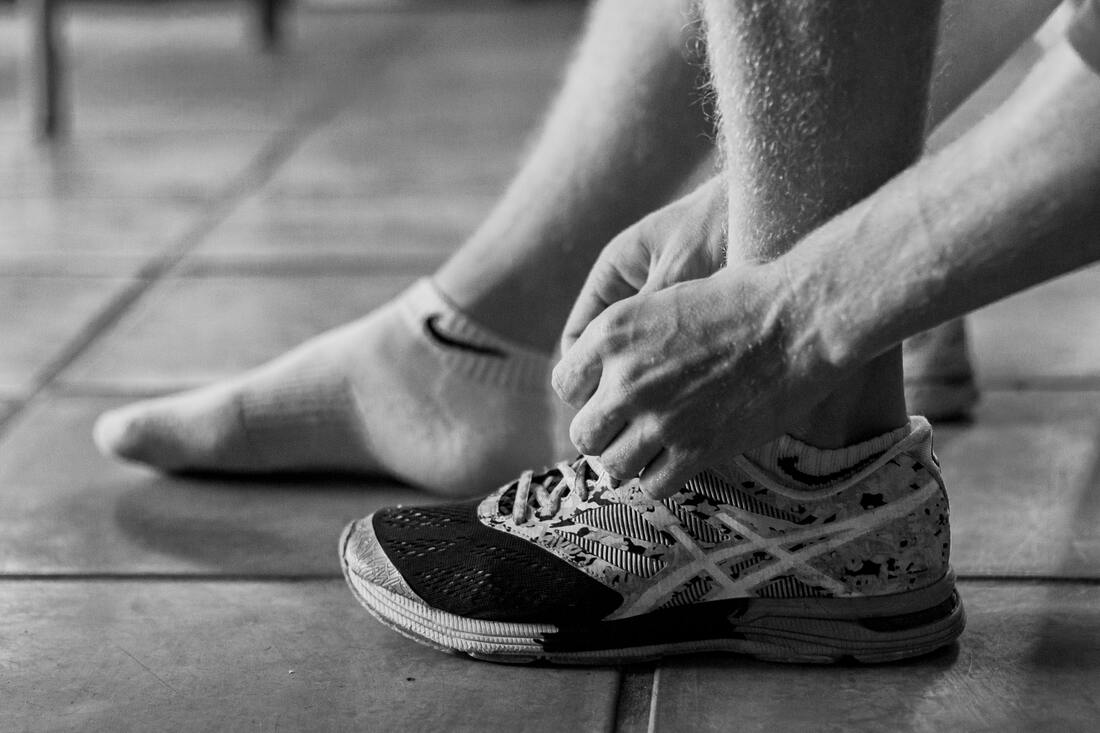|
SEARCH My Blog (Opens in new tab)
Four at-home exercises to strengthen your ankles and avoid injuryDuring the lockdown, we are allowed (in Australia) to leave our homes for exercise - alone or with one other person. There are many more people walking now than before the lockdown, which is good to see. As we walk more often and become more ambitious to walk longer distances, it is sensible to pay attention to our foot health. Conversely, imagine if you injured a foot while walking - you would be deprived of the pleasure and relief of being able to get out of the house each day for exercise. Although we know that maintaining the flexibility of our feet reduces the chance of injury, we rarely attend to it. That may be because the exercises you can find online require some manual pushing or pulling or using a band or ball or other tool. I know, because I searched for 30 minutes, without success, before writing this article looking for videos of the ones I am about to suggest for you. I then made my own video to illustrate them, below. I find that I am more consistent with more straightforward exercises — especially stretching and flexibility exercises. And if I can do them when I happen to think of them all the better. Walking more? Healthy ankles take the stress off your kneesHere are four very simple foot flexibility exercises that require nothing except your feet. They will improve ankle flexibility, help keep your feet limber and reduce your risk of injury. Strengthening your feet and regaining the range of motion at your ankles helps take the stress off your knees and promotes healthy knee function. If you are a runner - like me - then you will understand how crucial healthy knee function is. Don't worry if your feet have grown a bit stiff with age; studies show that no matter how old you are, you can still improve your flexibility. The easiest way to build flexibility is through slow and gentle daily stretches, and doing them as consistently as possible. Four ankle exercises - in less than 4 minutesYou will easily be able to build these four exercises into your everyday routine about the house, or while walking. In the video, below, I demonstrate the exercises in this same order. The four exercises are:
In all cases, walk down your hall, or across a room a few times, or 6 to 10 metres outside. Even better, walk in a figure-8 and you will activate a more extensive neuromuscular response from the turning and balancing. These exercises all have one thing in common - to an observer they look like you are doing nothing useful. You'll find out how wrong that observation is when you start doing them, and you rediscover all your muscles that have become lazy and inactive. Reactivating these lazy muscles is an important outcome which aids your balance and your foot and ankle stability. And, it can be done so simply as you will see. 1. Feet pointed out ↗ While standing, turn your toes so that they point outward, about 45-degrees or until you feel resistance. Turn out to your full range of rotation. Slowly walk forward, and feel your lazy muscles all the way up from your feet to your hips. Often your hips will shout out at you during this move. Stop if you feel pain, but keep strolling if you just feel those lazy muscles reluctantly being kicked back into action. 2. Feet pointed in ↖ This exercise is simply the opposite of the above activity. Turn your feet in to the full range of motion - aiming for about 45-degrees. Slowly walk forward while keeping your feet in this position. You will be surprised how you feel lazy muscles in your feet, hamstrings and hips fire up - that's what you want, to activate them again. 3. Walking on the outside of your foot ↘ This one takes a little more getting used to, but it is very worthwhile to improve your range of ankle motion and to condition the muscles and tendons. Roll your feet out slightly so that only their outside is touching the ground, while the inside is slightly off the ground. Be cautious when you first start doing this, it is quite safe but don’t roll your foot so far that you roll your ankle and sprain it! Slowly walk forward while balancing carefully on the outside of your feet. With this exercise, I take care and walk more slowly forward than the previous two. I like to sense the roll and ensure that I don’t go too far. On the other hand, as you become more flexible there is a sense of satisfaction is walking more on the outside and feeling the stretch more. As you walk you will feel any lazy muscles in your feet and the insides of your legs start to fire up. 4. Walking on your heels ↙ Last but not least, raise your toes and hold your foot up at the front to balance on your heels. Keep your toes in a more or less straight line with your raised foot. Only your heels will be on the floor as you slowly walk forward. If you find it difficult to balance, slow down and recover your balance, but stay on your heels and move slowly forward. Just like all the other exercises, this one is deceptively simple to an observer. It looks as if you are doing nothing. But it is improving your balance and your foot and ankle flexibility. That's a lot more benefit than you'll get from sitting on a gym machine and pushing the bar aimlessly. As you walk forward you'll feel your lazy muscles in your lower hamstring and the front of your legs fire up. Well done, you've completed four super simple exercises to improve your foot and ankle flexibility. These will help you avoid injury while walking, and help you avoid minor sprains and strains in everything you do using your feet. I do these daily, and often more than once, for example before I run and after I run. Good luck. PS If you have ever sprained your ankle here is a very a succinct look at ankle sprains — explaining what the injury is degrees of severity, symptoms, treatment, and rehabilitation. Follow me on Quora for more health and fitness tips.
If you valued this article >> Follow me Leave a comment >> Share it >> Stay healthy If you have any questions email me and I will get back to you. Latest: get your free customised fitness plan designed uniquely for you.
|
ChoicesSince I was diagnosed at 50 with Type 2 diabetes I've been learning how to do bone-building fitness training which lowers my age. You can too. It's your choice. Walter Categories
All
Archives
May 2023
|

 RSS Feed
RSS Feed 


